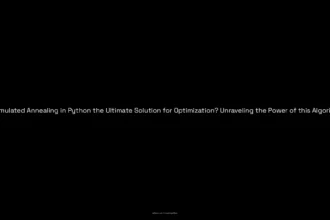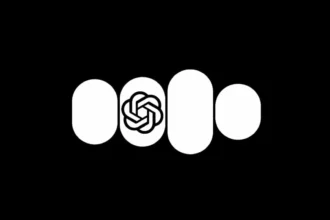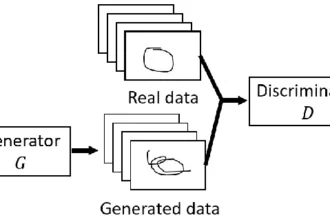Have you ever poured your heart into crafting a piece of writing, only to have an AI detector declare it “artificial”? It’s like attending a costume party in your favorite outfit, only to be told you came in disguise. The frustration is palpable, and you’re not alone in this perplexing scenario. GPTZero, an advanced tool designed to distinguish between human and AI-generated content, isn’t always accurate—it sometimes confuses genuine human creativity with AI signatures. Understanding the quirks of these algorithms could shed light on why your authentic words seem to miss the mark. Let’s dive into this digital conundrum.
Table of Contents
ToggleWhy does GPTZero say I used AI when I didn’t?
Why does GPTZero say I used AI when I didn’t? It’s a frustrating experience, and I completely understand where you’re coming from. GPTZero, like many advanced AI detection tools, is not infallible; there are instances where it might misjudge your authentic human writing as AI-generated content.
This isn’t a reflection of your abilities as a writer—it’s more about how these detectors function.
Equipped with algorithms trained to identify specific linguistic patterns and structures associated with AI-generated text, GPTZero can sometimes mistake your unique style for something it perceives as artificial. This phenomenon is commonly referred to as a “false positive.”
There are several factors that could lead to such an outcome. First, you might be using writing tools that incorporate AI elements—think Grammarly or Google Docs—which aim to enhance clarity and style but can inadvertently modify your work in subtle ways. These tweaks might align your writing with the characteristics that GPTZero is programmed to flag as AI-generated.
Secondly, even if you aren’t using any direct AI writing assistance, your natural style might still reflect the patterns found in AI compositions. If you tend to write in a very formal or structured manner, it’s possible that your prose mirrors the complexity that these detectors are attuned to recognize as artificial.
It’s also crucial to acknowledge that GPTZero and similar tools are still evolving. They have limitations and are continually learning about human language diversity. Just like any technology, they can sometimes stumble or be misled by nuances in your written expression.
So what should you do if you find yourself facing this perplexing situation? Transparency is key.
Communicate with your teacher or professor about the results you’re getting from GPTZero; let them know that you’ve crafted the work independently and understand the capabilities—and limitations—of these detection tools. It could be helpful to share specific details of your writing process, including drafts and notes, demonstrating your authenticity as an author.
If concerns persist surrounding the authenticity of your work based on AI detection results, consider alternative avenues to showcase your understanding of the material. Perhaps present your ideas verbally or utilize other formats—like visual presentations—to convey what you’ve learned effectively.
Always remember that open dialogue is essential with educators regarding your academic integrity and abilities. At the end of the day, these detection tools should serve as a supplementary resource rather than a definitive judgment on one’s intellectual contributions. Your goal is to showcase your knowledge and skills authentically; don’t let technical misunderstandings detract from that objective.
Can GPTZero be wrong?
Look, AI detection is like a game of cat and mouse. GPTZero is a pretty good cat, but the mice are getting smarter, and we’re constantly working to improve our game.
Sure, GPTZero can be wrong. No AI detector is perfect. It’s like trying to catch a shadow – sometimes you get it, sometimes you don’t. There are a few reasons why GPTZero might make a mistake:
- Accuracy limitations. AI is still in its early stages, and even the best tools have limitations. GPTZero is constantly learning, but it can’t always be 100% accurate. It’s like a student learning a new language – they might make mistakes, but they’ll get better over time.
- Evolving AI technology. Those AI-generated text mice are getting sneaky. They’re learning new tricks all the time, and it’s a constant race to stay ahead. GPTZero gets updated regularly to keep up, but it can sometimes lag behind.
- Human writing variety. Humans are creative creatures, and we write in all sorts of ways. GPTZero might struggle with human writing that’s really unique or unusual. It’s like trying to classify a rare species of bird – you might need a specialist to tell you what it is.
The key thing to remember is that AI detection tools are just one part of the puzzle. Don’t rely solely on GPTZero. Use it in conjunction with other methods, like reviewing the content, looking at the student’s writing history, or talking to the student directly. It’s about being smart and using your best judgment.
We’re constantly pushing the boundaries of AI detection, but it’s an ongoing process. We’re like a team of engineers building a rocket ship – we’re always working to make it faster, better, and more reliable.
Why does my text say it’s AI-generated when it’s not?
When you receive a flag indicating that your text is AI-generated, despite your efforts to ensure its originality, there could be several underlying reasons at play. AI content detectors, including tools like GPTZero, operate on a set of programmed algorithms designed to identify common patterns and language structures often associated with AI-generated text. However, these detectors aren’t flawless and can produce false positives. Let’s explore some common factors that could lead your text to be misidentified as AI-generated.
Mimicking AI Style: It’s worth considering that your writing style may inadvertently mirror the characteristics that AI detectors are programmed to recognize.
For instance, if your work tends to be particularly formal or incorporates complex sentence constructions, or if it lacks the personal anecdotes typical of human writers, this might trigger flags suggesting AI authorship.
Even if you haven’t utilized any AI writing tools, there’s a possibility that your style integrates common traits seen in machine-generated content.
AI-Assisted Writing Tools: Many popular writing platforms, such as Grammarly or Google Docs, employ AI algorithms aimed at enhancing the quality and clarity of your writing.
While these tools can offer significant benefits, they may also introduce subtle modifications to your prose—adjustments that could lead it to seem more automated than it is. The peculiar changes made by these tools can result in a blend of human originality and robotic syntax that confuses detection systems.
Detector Limitations: While AI detectors are continuously advancing and improving in reliability, they are not infallible. These systems may misinterpret human-written pieces, especially if an author’s style diverges from what the detector recognizes or if the machine hasn’t been trained on an extensive variety of human writing samples. The diversity of human expression is vast, and detectors often struggle to adapt to every nuance.
If you find yourself facing a false positive flag, it’s essential to engage with whoever is evaluating your work. A constructive conversation can clarify any misunderstandings regarding authorship.
Don’t hesitate to communicate that you crafted the content entirely on your own and acknowledge the limitations inherent in AI detection tools. Providing supporting evidence of your writing process—such as drafts or notes—might further reinforce your case and demonstrate the authenticity behind your work.
Ultimately, as technology continues to evolve, it’s important for writers to remain aware of how their style may interact with AI detection mechanisms while also advocating for the integrity of their original creations.




